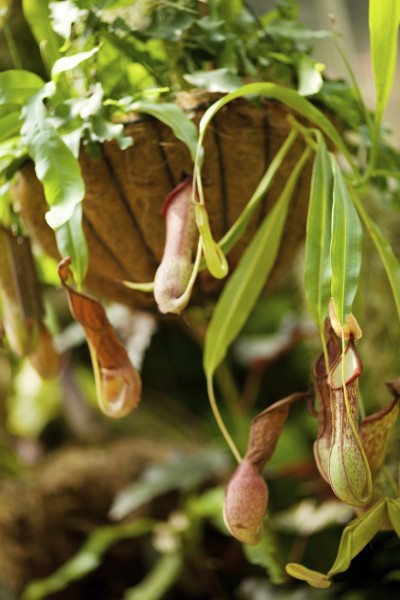






Pitcher plants are a fantastic addition to the home. They’re a little bit temperamental, but if you’re willing to put in the extra work, you’ll have a striking conversation piece. Keep reading to learn about good pitcher plants for hanging baskets.
Hanging pitcher plants in baskets is the most effective way to grow them. In the wild, the plants vine up trees, and providing them with plenty of empty space will give them the air circulation they crave and allow the pitchers to grow to their full and most impressive extent.
Hanging pitcher plants thrive in light, well-draining soil that’s poor in nutrients but high in organic matter. This can be sphagnum moss, coconut fiber, or a store-bought orchid mix.
Pitcher plants need high humidity – water frequently from above, and mist daily. Hang your basket somewhere it can receive full sun. Temperature is very important. Most species require daytime temperatures of 80 F. (26 C.) and higher, with a very marked temperature drop at night.
Pitcher plants are native to Southeast Asia and northern Australia and, for the most part, crave high temperatures and humid air. Many varieties, however, grow at high elevations and are used to much cooler temperatures. Pitcher plants cross pollinate very easily and, as such, there are a huge number of varieties and quite a few that are able to tolerate low temperatures.
If you live in a hot area or have a greenhouse, however, your options are much greater.
The number of species is enormous, however, so first get a sense of your area’s temperature range, and then look into what’s available.
Copyright © www.100flowers.win Botanic Garden All Rights Reserved